Elon Musk unveils San Francisco-LA 'Hyperloop' idea
- Published
Passengers would undergo forces of gravity similar to an aeroplane, Mr Musk said
US-based entrepreneur Elon Musk has unveiled his proposed near-supersonic "Hyperloop" transport concept to link Los Angeles and San Francisco.
The SpaceX, Tesla and PayPal founder envisions using magnets and fans to shoot capsules floating on a cushion of air through a long tube.
If the Hyperloop is ever built, a trip on it between the two California cities would last about 30 minutes, he said.
But Mr Musk says he is currently too busy to develop the project himself.
In a paper outlining the Hyperloop proposal, external, Mr Musk suggested the solar-powered system would be a faster, safer, less costly, and more efficient mode of transport between Los Angeles and San Francisco than the high-speed train currently under development.
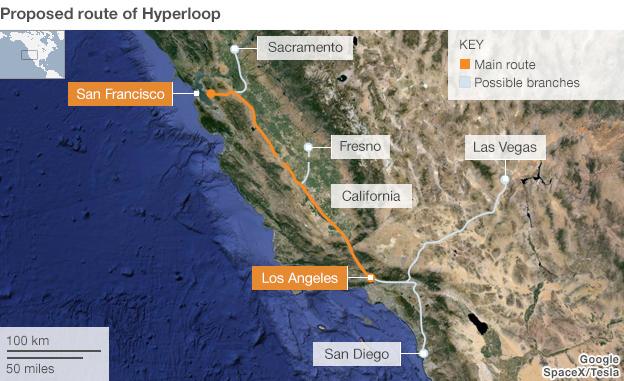
"Short of figuring out real teleportation, which would of course be awesome... the only option for superfast travel is to build a tube over or under the ground that contains a special environment," he wrote.
'$20 a ticket'
Mr Musk estimated the system linking the two cities, which are 380 miles (610km) apart, would cost $6bn (£3.9bn).
Capsules could depart as often as every 30 seconds and could also carry cars, travelling at up to 760mph (1,220 km/h), nearly the speed of sound.
Passengers seated in cabins inside the capsules would experience slightly more than the force of gravity, more like on an aeroplane than a roller coaster, he said on a conference call.
He said he would likely build a prototype of the concept, but not immediately, as he is busy with his commercial space project SpaceX.
A demonstration model would take up to four years to complete, he said.
He said the concept would best work between cities closer than 1,000 miles, because beyond that supersonic air travel would be preferable.
But for the shorter distance, his new concept would beat the plane, he argues, because it would not waste time ascending and descending.
The San Francisco to Los Angeles route would be elevated alongside a current California motorway, which would enable it to be constructed with minimal disputes over land rights, Mr Musk said. The tube and supporting columns would be designed to withstand earthquakes.
He estimated a trip would cost $20 (£13).
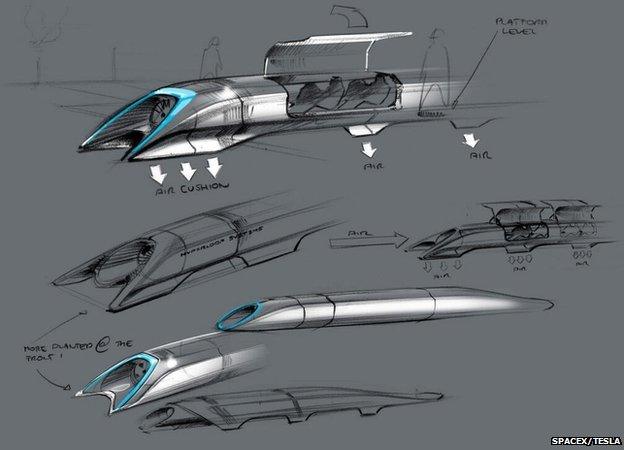
Compressors are required to move air past the vehicle and create air bearings
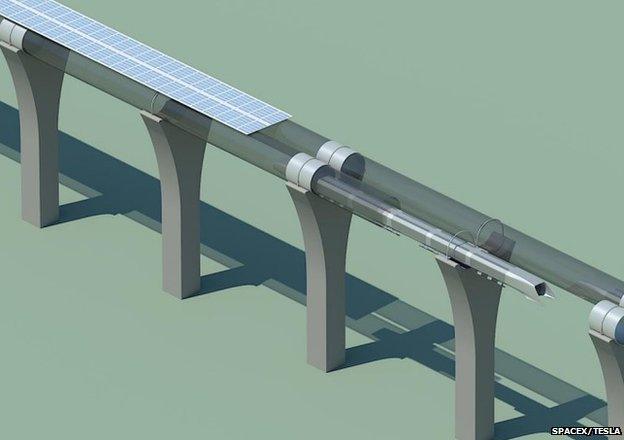
The Hyperloop tube system would be powered by solar arrays
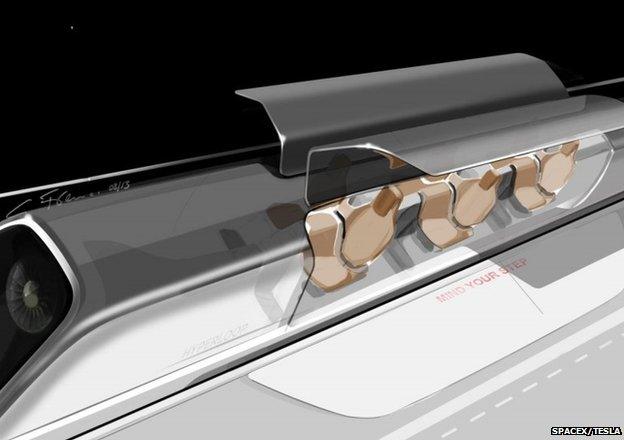
The Hyperloop passenger capsule would likely weigh close to three tonnes
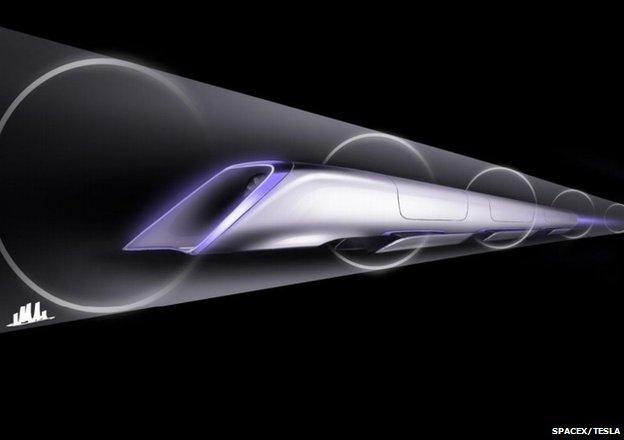
Although not a vacuum tube, Hyperloop would need to operate at reduced pressure
- Published13 August 2013
- Published9 May 2013
- Published31 May 2012